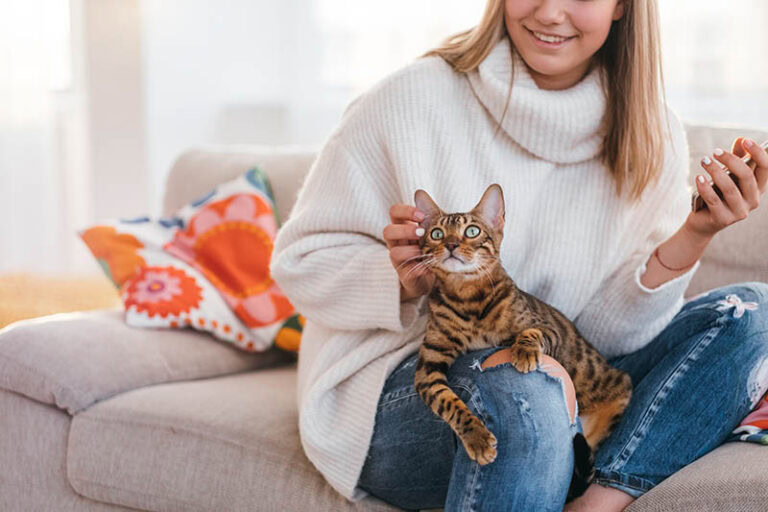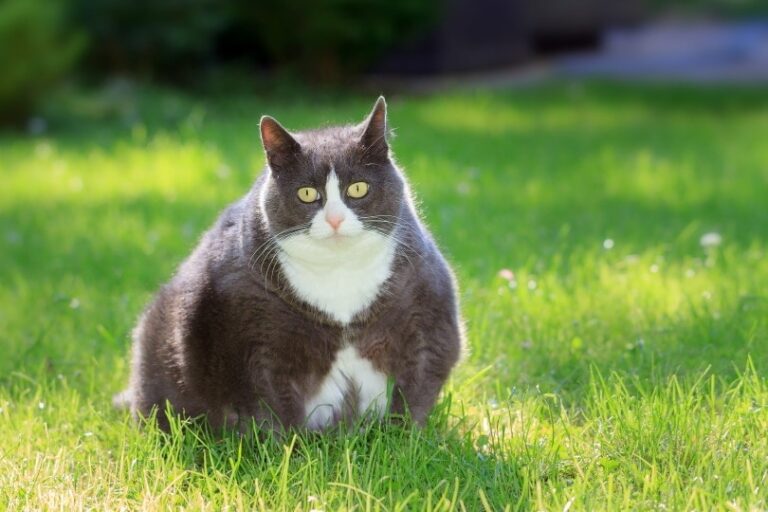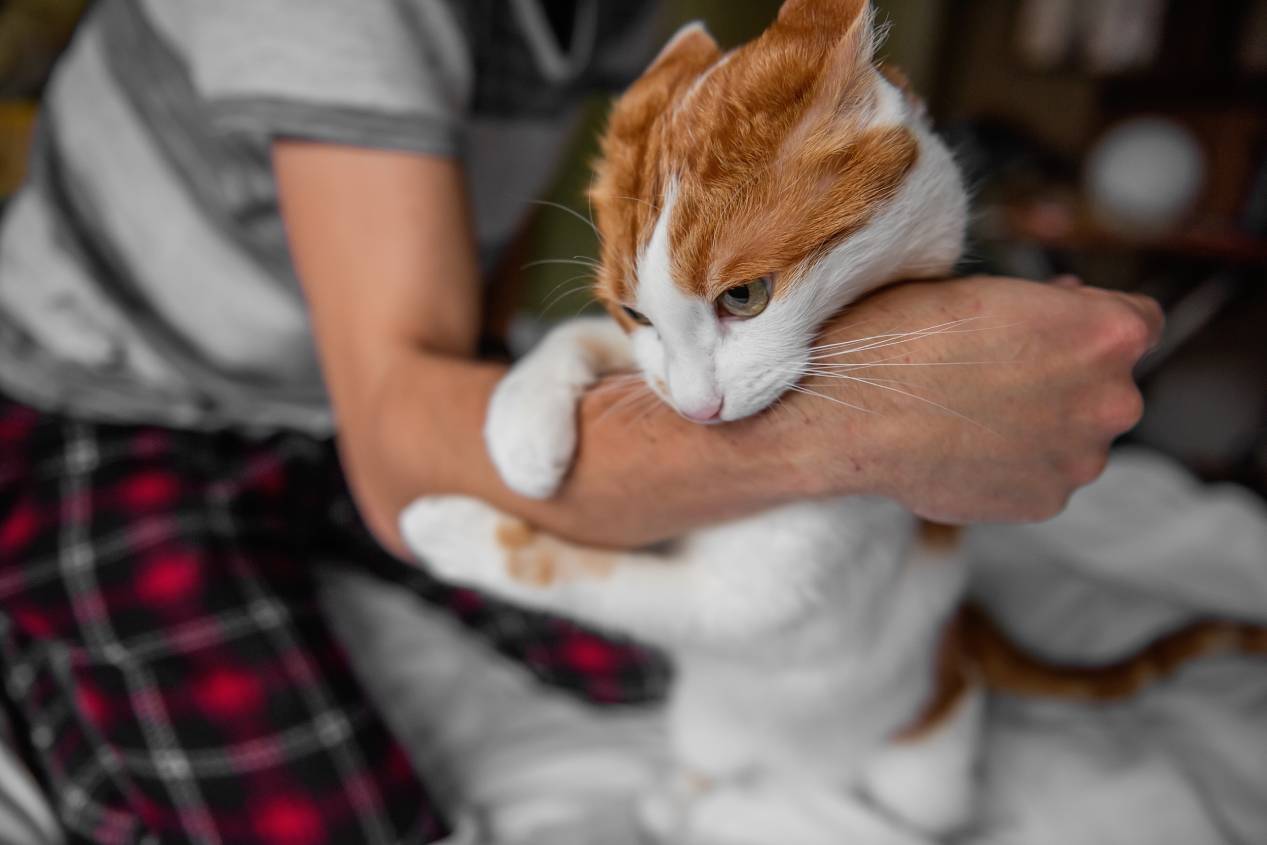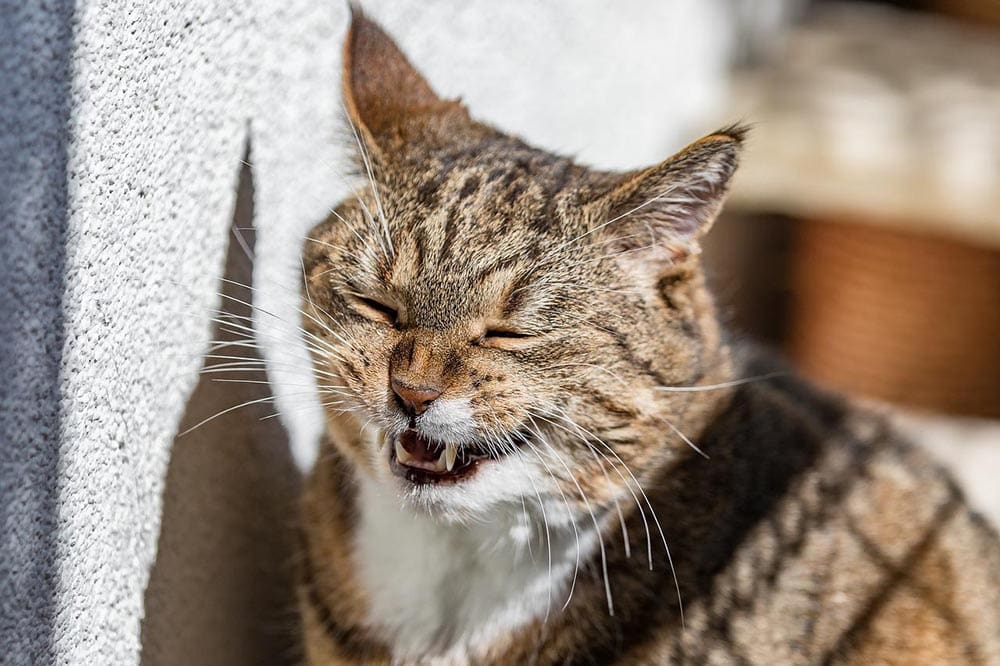VET APPROVED

The information is current and up-to-date in accordance with the latest veterinarian research.
Learn more »Click to Skip Ahead
The phrase “copycat” seems to have been borne out of frivolous and playful phenomena. No one would think this silly phrase holds much significance in practice, but recent scientific studies prove otherwise.
Although cats are typically considered to be a solitary species in nature, particularly when compared to pack animals like dogs and wolves, we know that stray cats can learn to live in groups called colonies, and that they are very observant creatures that have adapted to living with humans. Anecdotal observations reported by many cat owners refer to how oftentimes pet cats even learn to mimic their owners’ behavior or sounds to get what they want.
But this barely scratches the surface when it comes to cat imitation. Here, we’ll highlight the possible reasons why cats imitate their owners and other cats.

The Science Behind Cat Mimicry
For a long time, scientists thought cats didn’t have the cognitive capabilities to mimic their owners. However we know that cats, especially kittens, are capable of observational learning, demonstrated by their ability to learn prey-catching techniques from their mothers. This capacity extends to adult cats as well, who perform better in task learning after watching demonstrations.
However, cats do not exclusively imitate their owners. In multi-cat households with shared spaces, they frequently mimic each other’s routines and habits. Similarly, more timid cats may adopt behavioral cues from their braver counterparts. Once they see a familiar cat do something, they are likely to follow suit, even if they initially felt insecure about it.


The 3 Reasons Why Cats May Mimic Humans and Other Cats
There are a couple of reasons why cats mimic humans and other cats. Some of the most common include:
1. To Establish a Routine
Cats are creatures of habit. They often innately mimic other cats, and even their owners’ behaviors to establish a routine and feel more comfortable and safe in their territory or household.
For example, cats can learn to drink from a faucet after observing another cat, and as soon as one cat starts using a new scratcher, others will often follow. Some of our readers have even observed their cats using the toilet bowl after seeing their owners in action.
2. To Learn New Skills
Observational learning is a type of learning in which an individual learns by observing and imitating the behavior of another. Many animals, including cats, employ this type of learning, and it allows them to acquire new skills without direct instruction or reinforcement.
When cats observe the behavior of their owners or other cats, they can learn new skills that they would not usually be exposed to. It helps them adapt and survive in a wide range of environments.
3. To Bond With Their Owners and Fellow Cats
In social situations, cats may also use mimicry to build and reinforce their bonds with other family members. This is especially true for owners and kittens, who often develop a close bond over time.
This behavioral bonding also applies to other cats in the house or neighborhood. Cats can strengthen group cohesion and establish stronger social ties by imitating each other’s postures, vocalizations, and body language.
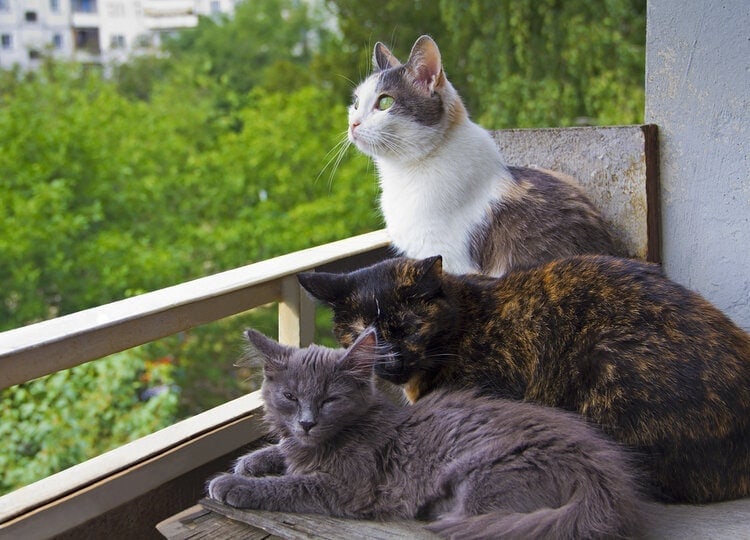

How Owner Behaviors Influence Cat Behavior
An owner’s personality and behavior can influence their cat’s behavior over time by shaping the cat’s environment, routine, and stress levels. For example, a 2019 study indicated that cats living with more anxious owners were more frequently reported to have behavioral issues. This correlation is more related to the owner’s caregiving approach than to genuine imitation or intentional mimicry by the cat.
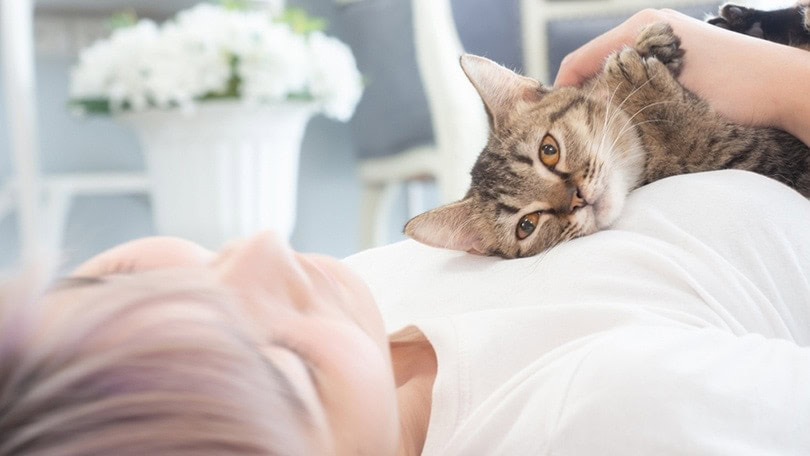

Conclusions About Cats Imitating Their Owners
Cats are highly intelligent, displaying complex social behaviors and an impressive capacity to adapt their behavior based on their environment and interactions, which can reflect the quality of care and emotional climate in the home. This is not real mimicry, but rather behavioral adaptation influenced by external factors.
At present, there is no scientific evidence that cats engage in true “mimicry” that is found in other members of the animal kingdom. However, we know that cats can – and do – copy the actions, habits, and behaviors of other cats and humans, even down to imitating human sounds. If cats learn that imitating their owner gets them something they want, they will repeat this behavior in the future. Being the observant and intelligent creatures that they are, cats are likely to figure out how to get something they want from their owners, whether that is via mimicking a behavior or meowing back to them.
See also:
- Can Cats Have Autism? Vet Reviewed Facts & FAQ
- Can Cats Have ADHD Like Humans? Vet Reviewed Facts & Warning Signs
- Do Cat Recognize Themself in a Mirror? Reactions & Science
Featured Image Credit: Svetlana Rey, Shutterstock


